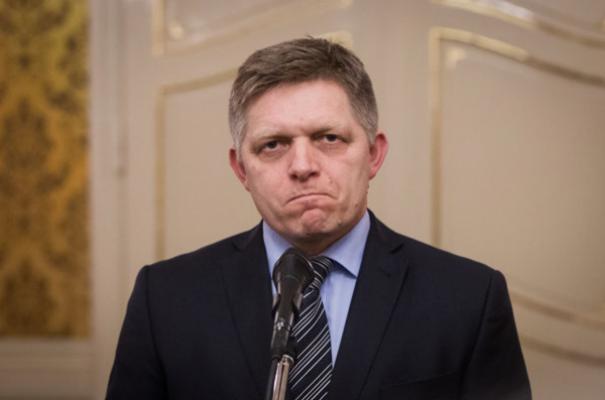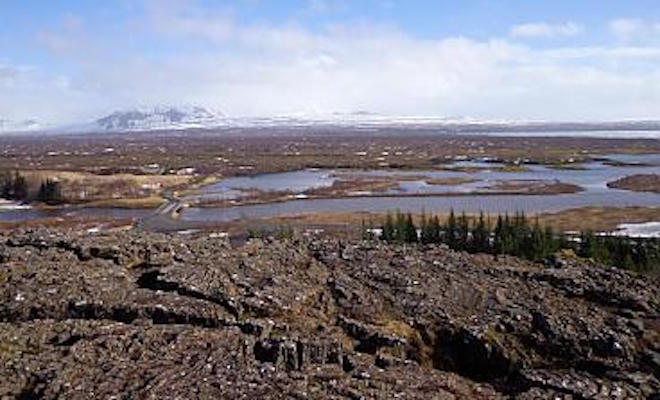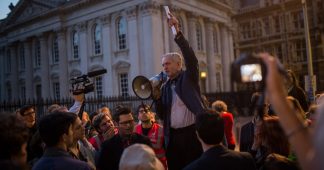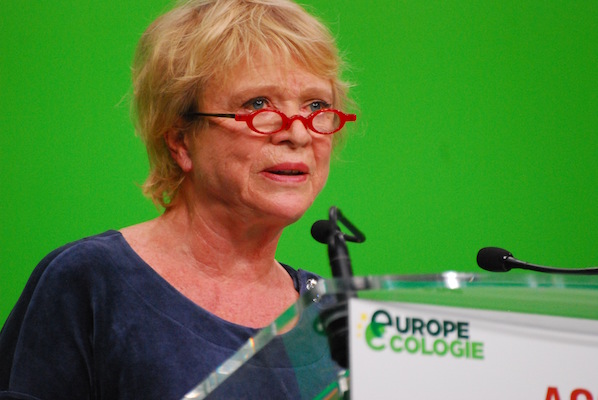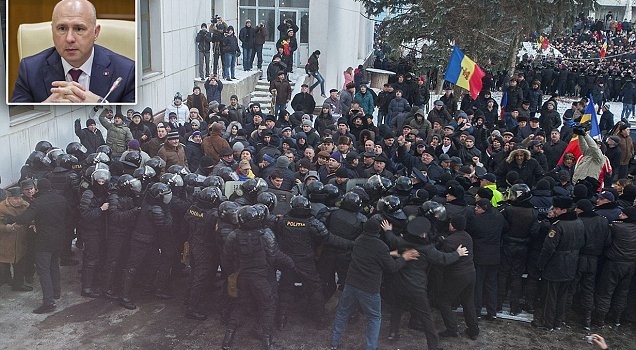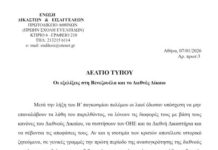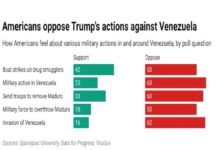By LEXIT-NETWORK
Iceland recently held new elections following the resignation of its Prime Minister due to the Panama Papers. In an interview with the activist Árni Daníel Júlíussson, the Lexit Network gathered updated information on the current situation in Iceland. We spoke also about the crisis, crisis policies, social movements in Iceland, the Euro and the question of EU-Membership.
Árni Daníel Júlíusson is an historian in Reykjavík, Iceland. He has written numerous books and articles on Icelandic history. He is a member of the board of Attac Iceland.
How was the result, how will the next government look like and what does it mean for Iceland´s politics?
The result of the Icelandic elections on 29 October was that seven parties received enough votes to get a representation in Parliament. The Independence Party (right wing) received 29% and 21 MPs (up from 19 MPs). The Left Greens 16% and 10 MPs (up from seven MPs). The Pirate Party 15% and 10 MPs (up from three MPs). The Progressive Party (center) 12% and eight MPs (down from 19). Viðreisn („Resurrection”, a center right party) 11% and seven MPs (new in Parliament). Björt framtíð („Bright Future”, a center party), 7% and four MPs, down from six and Samfylking (Social Democrats) 6% and three MPs (down from nine MPs). The government of the Independence Party and the Progressive Party -which had the Prime Minister and a MP exposed as resorting to tax havens in the Caribbean in 2016 causing widespread outrage–lost a total of nine MPs and its majority in Parliament.
The new government has not been formed yet. The political situation is chaotic, with no clear majority in sight to form a government. The Pirate Party represents a powerful mass movement against neo-liberalism but it did not receive the big gains expected and thus was not able to form the socially progressive government it planned. The political situation is complicated in that the mass movement is largely determining the political mood but it has difficulties in transforming this power into a clear political representation or program. Moreover, the capitalist elite is fighting hard to keep its privileges.
During the financial crisis, there was incredible political activity in Icelandic society. Could you describe what are these movements and where did they come from?
A very good question and not an easy one to answer… The activity was enormous and it surprised everyone, even the protesters. The movement formed spontaneously as a square movement, somewhat similar to Tahrir Square, Syntagma and Zucotti Park later and occupied a space in downtown Reykjavík. It met there every Saturday at three o´clock, growing with astonishing speed in October and November 2008. It included every form of radical activity already present in the country: Anarchists, Internet activists, feminists, neo-marxists, environmentalists, communists, activists of all denominations, even pro-EU activists, growing enormously. All kinds of people came out in large numbers and organized. About 70% of the population supported the movement. The activity was incredible, as you say.
It soon gave rise to several organized initiatives: Political parties, several organizations, new web media, etc. It also left in place an informal network of connected activists, which is probably even more important.
Probably this movement, like the 2011 movements, was a new phenomenon of some kind, a realignment of the form of class struggle in the circumstances of a financial collapse and simmering discontent with the neo-liberal consensus. The Latin-American movements 1989-2008 provided important models, also the Battle of Seattle 1999, etc.
Iceland responded quite differently to the financial and economic collapse compared with Eurozone countries like Greece or Portugal. What where the main political responses to this collapse? What was the result?
As you rightly point out, Iceland responded differently to the crisis than some other countries. It did not bail out its failed banks, as was done elsewhere with public money and it did not impose suffocating and lasting austerity on its population at the diktat of the EU. Iceland is outside the EU and keeps its own currency, which could be used to bolster some of the shock. However, the IMF did intervene and impose austerity, which was fought tooth and nail by the new street movement. Following that, the IMF allowed some surprising acts of financial relief, like capital controls, unheard of until then in the neo-liberal world regime of financial crisis management.
The main political response to the crisis was the creation of the aforementioned mass movement, which demanded the resignation of the government of the Independence Party and the Social Democrats, the resignation of the chief of the Central Bank and new elections. These demands were met in January and February 2009. In the elections, held in April, the Social Democrats and the Left Greens received a majority, the first such left majority in Icelandic history.
However, this „left” government proved a bitter disappointment and only a minority of it –the left wing of the Left Greens– really co-operated with the street movement. The government policies, e.g. the proposed Icesave agreement with the Netherlands and the UK, wherein the Icelandic people had to fully reimburse the losses of a private Icelandic bank, were rolled back by the street movement in a very hard struggle, lasting two years.
You suggest that the IMF´s demands where not so hard, compared with the Troika interventions in Southern Europe or earlier IMF interventions in Eastern Europe. What could be the reasons?
In Iceland, the IMF took the unusual step to allow capital controls in order to prevent flight of large amounts of valuables stored in Icelandic currency: Government bonds or other bonds bought before 2008, when the price of the króna was high. This matter has not been discussed adequately. It is clear that if these controls had not been allowed, it would have led to the total collapse of the economy. As it was, the economy was in a dismal enough state after the crash.
This difference in treatment came after a long period of criticism of the IMF for implementing far too harsh policies. This might have played a role. It is significant that in the case of Greece the EU institutions were harder than the IMF itself.
What is the role of the Eurozone and EU membership when it comes to the different responses to the financial crisis in Iceland as compared to Southern EU-countries?
The role is extremely important: In Iceland, the króna could simply be devalued to counter some of the worst effects of the crisis. The devaluation was very high, but the wheels of commerce were kept going to some extent and –along with the capital controls– it prevented the complete collapse of the economy. However, there was a large increase in unemployment and a big slowdown in economic activity.
In the Eurozone, things were different: As Yannis Varoufakis has explained in his book The Global Minotaur, the Euro arrangement does not allow for transfers of funds in times of crisis from well-off areas to worse-off areas of the economic zone, as is normal in nation-states. The worse-off areas are then condemned to perpetual crisis, it seems. They are also not able to devalue their currencies, having abandoned them in exchange for the Euro, which in this context functions as an expanded Deutsche Mark administrated in a very irresponsible and illogical way by the German elite.
One aspect of the crisis in Southern Europe is mass emigration. Especially high skilled young people leave their countries to find a job elsewhere. These people will not be there when it comes to re-establishing the economy. You say that unemployment increased also in Iceland. What about the emigration of young people? What have the governments done in order to keep them?
There was quite an emigration stream from Iceland in the period 2008-2011. Skilled workers, especially, fled the country and in many cases found work in Norway. Many of them are still there. There are two main comments to be made on this: On the one hand, after 2011 or so, unemployment gradually decreased and it is negative now. We need more people for the jobs available in Iceland. This is because of a return to a generally good situation and also because of the explosion in tourism since about 2011. On the other hand, there is no plan from the side of the government to educate and keep well educated people in Iceland. A large emigration occurs every year by ambitious young people who will not return because of lack of opportunities. A focused investment strategy by the authorities in a broad range of fields is necessary to keep these people in Iceland.
In the Eurozone there were large rescue programs for banks. The Icelandic society managed to stop this kind of transfer of public money by two referenda. What did the governments do to rescue people and enterprises in terms of active economic policies?
This is a very long and complicated story, so I can touch only a few main points here. Several programs were launched already in 2009 to limit the consequences of economic damage for families. The IMF opposed the main demand of the protesters, a general debt relief. The „left“ government could not or would not go against the IMF in this, but a widespread freeze on payments on (bad) loans was imposed and was active for several years. In 2013 the IMF had left the country and a general debt relief was granted. As for the enterprise sector, it was bankrupt as a whole at the end of 2009, but real assets proved substantial and most (if not all) capital groups were reorganized and re-privatized under the „left“ government 2009-2013. The banks themselves were, however, bankrupt and were not rescued. New banks were founded instead.
How is EU membership currently discussed in Iceland? Did it play a role in the election campaign?
EU membership has not had a majority in polls in Iceland since 2009. However, it played some role in recent political developments because the government of the Progressive Party and the Independent Party backed out of its promise to allow a referendum on the continuation of the talks with the EU. This happened in early 2015 (long before the Panama Papers) and caused the collapse of support for the government and a great increase in support for the Pirate Party. This really had little to do with any interest in joining the EU but everything to do with something one could call the crisis of faith in the political establishment. Politicians had lied once again and this caused an uproar.
What would be the main consequences for Iceland, if it would join the EU?
Iceland already has a very large degree of co-operation with the EU in most areas. If Iceland would join the EU, the most feared consequences have to do with fishing policies. In 1950-1976 Iceland fought the so-called ‘cod wars’ to gain control of its fishing grounds and stop over fishing by British and German trawlers. Iceland is not very keen in giving access to these fisheries back to the EU, but it would have to do so in order to join it.
What about the movement today? Is there still mobilization? How is the link between the movements and movement-like parties in Parliament? What are the main topics?
The movement is still mobilized in a variety of ways. It came out in a massive way in April because of the Panama Papers, forced the resignation of the PM, demanded and got elections. Parts of it are closely aligned with the Pirate Party in Parliament. The main topic is still the aforementioned issue of the complete loss of trust in the ruling class by the public that occurred in 2008. The ruling elite is a very, very long way from restoring that trust.

